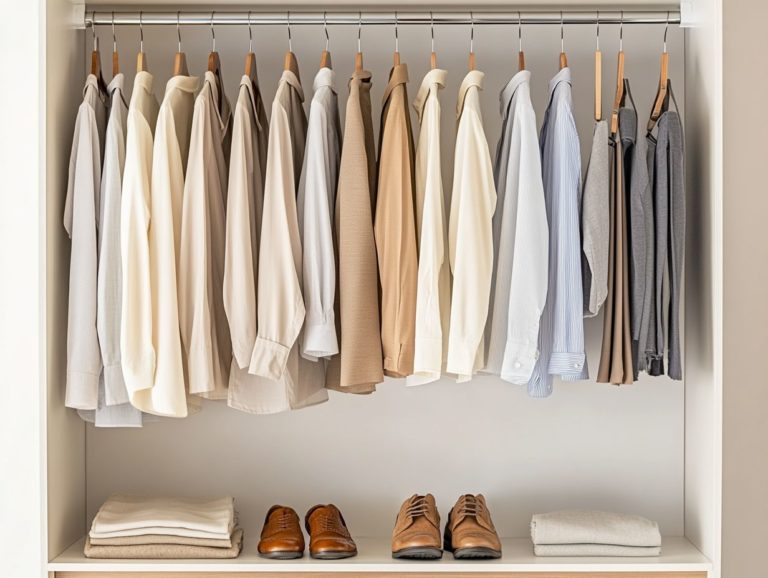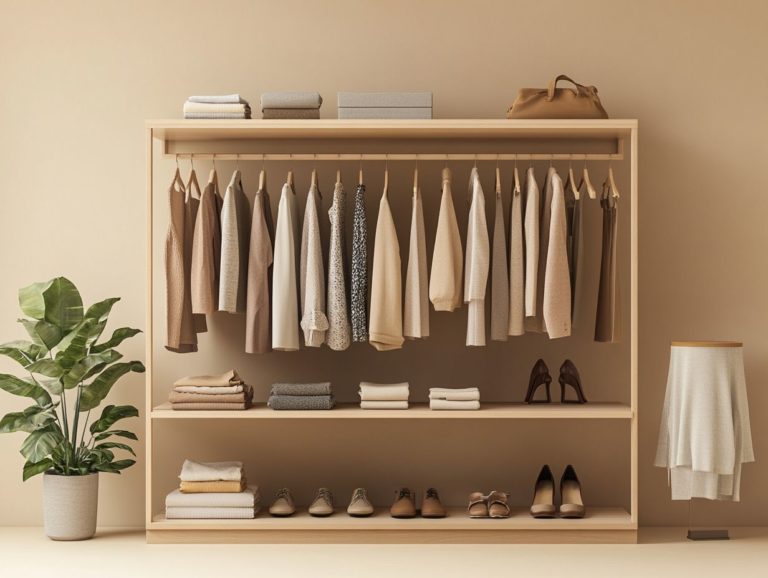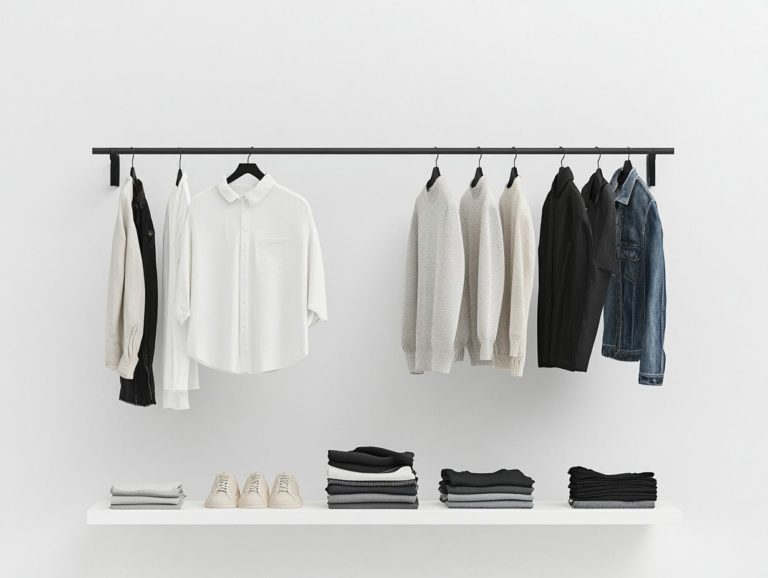What are the Most Versatile Clothing Colors?
Colors hold immense power in your daily life, shaping your emotions and the perceptions others have of you.
This exploration delves into the importance of clothing colors. You ll discover their influence on mood and their suitability for various occasions. You ll learn about the timeless charm of neutral shades, how to select colors that beautifully complement your skin tone, and gain insights on crafting a versatile capsule wardrobe.
Prepare to elevate your style with the perfect palette!
Contents
- Key Takeaways:
- Understanding the Importance of Clothing Colors
- Neutral Colors: Versatile and Timeless
- Colors for Different Occasions
- Choosing the Right Colors for Your Skin Tone
- Creating a Capsule Wardrobe with Versatile Colors
- Frequently Asked Questions
- What are the Most Versatile Clothing Colors?
- How can I incorporate versatile clothing colors into my wardrobe?
- Do versatile clothing colors work for all seasons?
- Can I wear versatile clothing colors for both casual and formal occasions?
- Are there any other benefits to choosing versatile clothing colors?
- What are some examples of how I can style versatile clothing colors?
Key Takeaways:
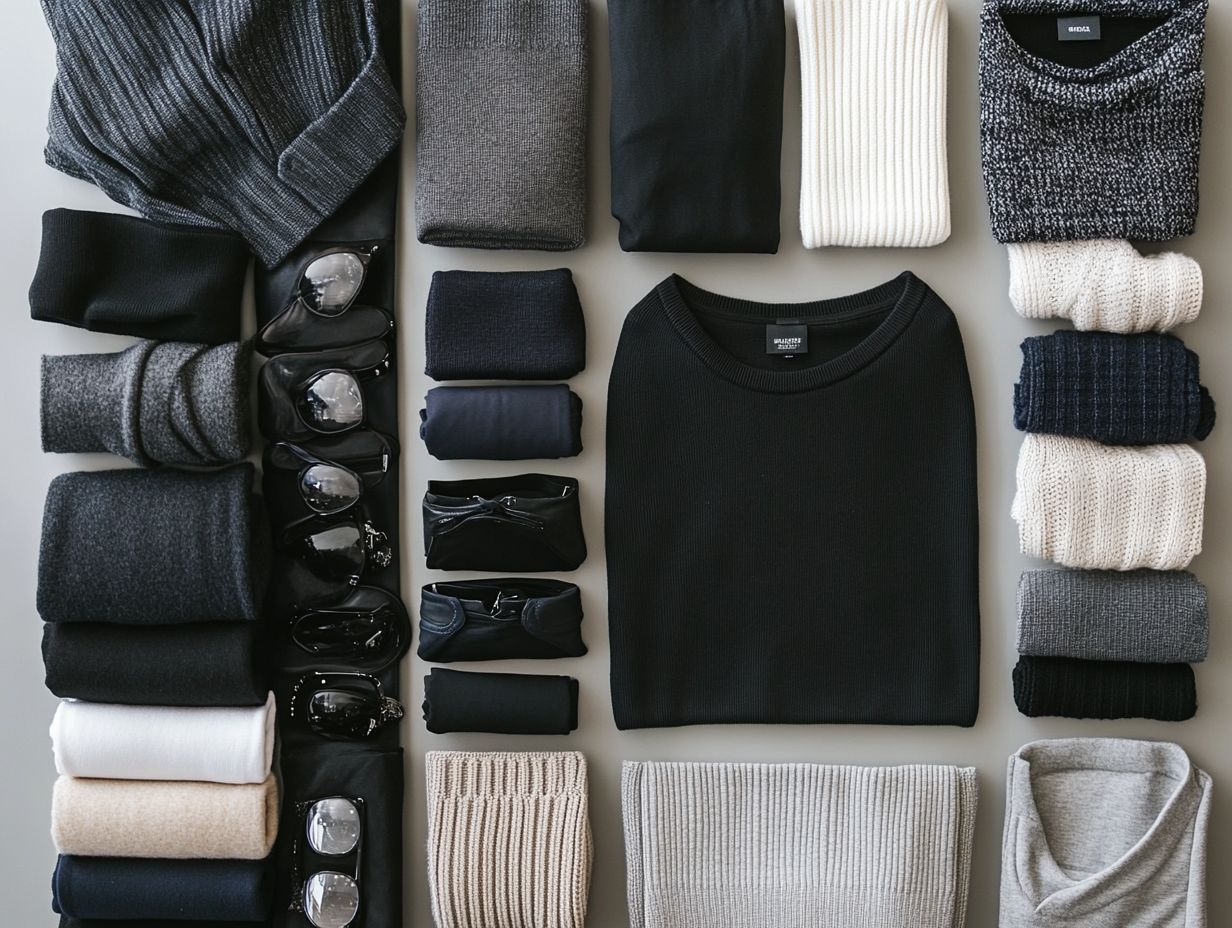
- Neutral colors, such as black, white, and shades of grey, are versatile and timeless options for any occasion.
- Understanding your skin tone helps you choose complementary or contrasting colors for a cohesive look.
- A capsule wardrobe with versatile colors maximizes your outfit choices.
Understanding the Importance of Clothing Colors
Understanding clothing colors is essential. They help shape mood and perception.
The colors you choose to wear can evoke emotions, influence how others perceive you, and reflect your personal style.
By grasping the principles of color psychology, you can choose outfits that reflect your style and boost your confidence. This applies whether you re aiming for a casual vibe or dressing for a business casual occasion.
Impact on Mood and Perception
The influence of clothing colors on mood and perception is significant. Each hue can evoke a distinct emotional response.
For instance, wearing a rich navy blue might make you feel calm and project professionalism ideal for crucial meetings. On the other hand, vibrant reds ignite energy and confidence, making them perfect for social gatherings where you want to make a memorable impression.
Neutral colors like beige and gray provide a balanced foundation. They allow for effortless mix-and-match outfits that adapt seamlessly to various settings.
This thoughtful approach lets you express different facets of your personality as you navigate life’s many occasions.
Neutral Colors: Versatile and Timeless
Neutral colors form the backbone of a versatile and timeless wardrobe. They provide a foundation for countless outfit combinations. Hues like beige, charcoal, and navy blue seamlessly blend with other colors.
Incorporating these neutral shades maintains a polished appearance across various settings, whether you’re in casual or business casual attire.
Exploring the Different Shades
Exploring the various shades of neutral colors reveals a rich spectrum. This includes versatile options like olive green, light brown, and charcoal.
Take olive green, for example; it pairs beautifully with deep burgundy to evoke a warm, autumnal vibe. Light brown complements soft pastels, adding sophistication to your ensemble.
Charcoal stands out as an elegant alternative to black, offering a modern twist when combined with brighter hues.
Each of these shades elevates your individual outfits and contributes to a timeless wardrobe, allowing you to transition through the seasons with ease. With the rising trend of earth tones emphasizing a connection to nature, these colors are essential for a refined aesthetic.
Colors for Different Occasions
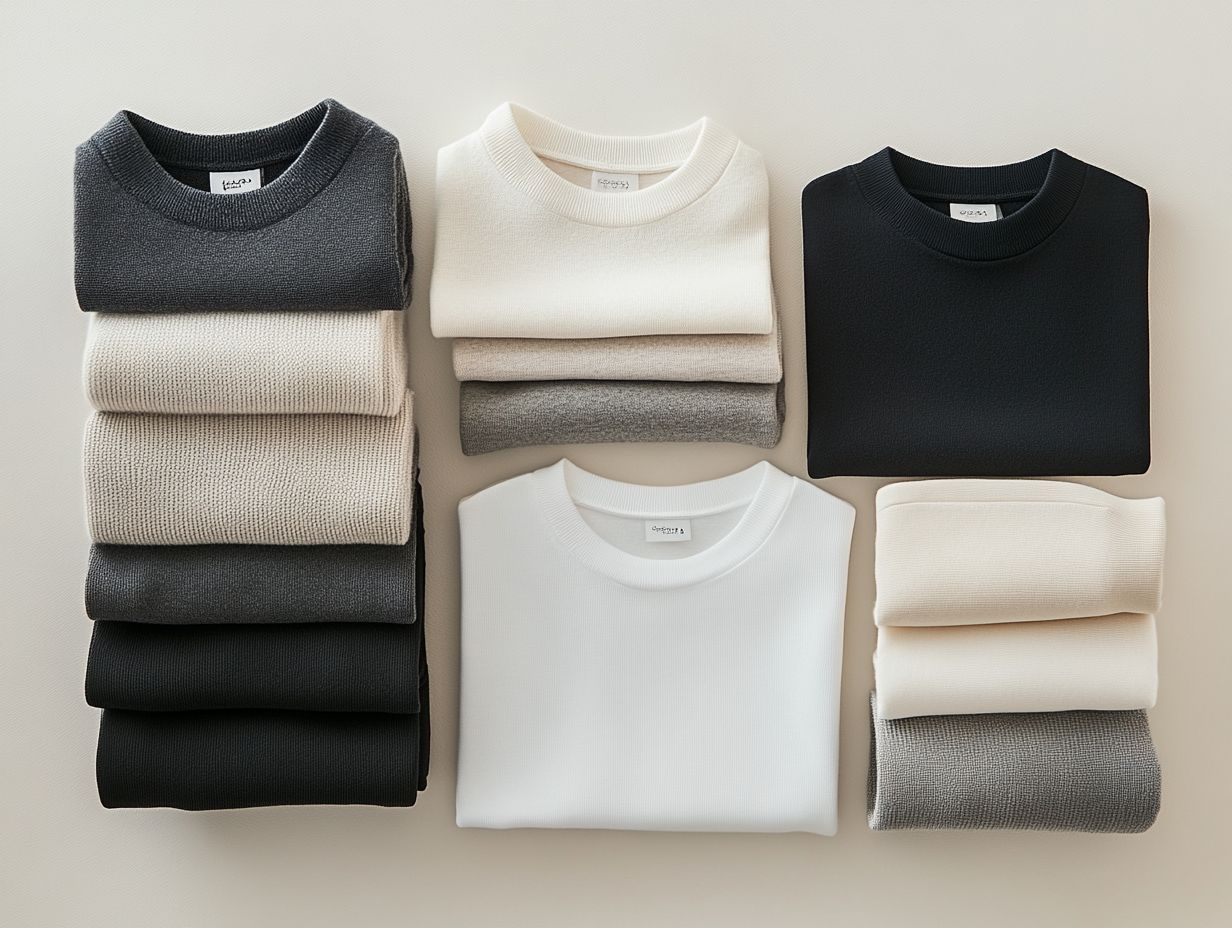
Choosing the perfect colors for various occasions is crucial in fashion. Each setting demands specific tones and styles that can elevate your appearance and boost your confidence.
For casual outings, lighter, more playful colors serve you well. Professional environments call for business casual attire, which means dressing smartly but not too formally. This style is characterized by timeless colors think navy suits paired with classic dress shirts like light blue.
For formal events, darker, richer tones become essential. These colors exude sophistication and elegance, leaving a lasting impression.
Professional Settings
In professional settings, selecting the right colors is essential for leaving a lasting impression. Business casual attire is often the norm.
Opting for timeless hues like a navy suit paired with a crisp white dress shirt can significantly enhance your presence. These foundational pieces represent professionalism and convey a sense of confidence.
Pay attention to the contrast between these colors and your skin tone to achieve a harmonious look. For example, warmer skin tones often pair beautifully with deeper shades, while cooler tones shine with lighter palettes.
By focusing on these details, you can effortlessly command respect and admiration, ensuring you stand out for all the right reasons.
Casual Wear
Casual wear gives you incredible flexibility! You have the option to explore bold colors or subtle shades based on your mood.
Incorporating neutral tones like beige, grey, and white allows you to achieve an effortlessly chic look that never goes out of style. Textures such as denim, cotton, and knits add depth without overwhelming your ensemble.
Imagine layering a soft cream sweater over a muted chambray shirt; this creates a visually appealing contrast that flatters various skin tones beautifully.
Patterns, like subtle stripes or delicate floral prints, infuse your outfit with personality while maintaining sophistication. Let s not forget accessories! Opting for minimalist jewelry and comfortable footwear enhances that relaxed vibe, resulting in a balanced yet stylish appearance that truly reflects your individual flair.
Formal Events
For formal events, choosing timeless colors is essential for achieving a sophisticated appearance that exudes elegance and style.
Consider opting for dark, rich hues like:
- Navy blue
- Deep burgundy
- Forest green
These colors project authority and confidence, evoking feelings of calm and stability crucial for leaving a lasting impression.
Classic styles like a tailored suit or an A-line gown can be beautifully complemented with accessories in metallic or neutral tones, striking the perfect balance while preserving a chic aesthetic.
Understanding color psychology enhances your choices. For instance, black signifies sophistication, while a touch of gold adds warmth and luxury, elevating your overall ensemble for any formal gathering.
Choosing the Right Colors for Your Skin Tone
Choosing the right colors for your skin tone is crucial for enhancing your natural beauty. The right shades ensure your outfit complements rather than clashes with your complexion.
Understanding the difference between warm and cool tones greatly influences your color selection. It guides you toward shades that elevate your overall look.
By considering your natural contrast level and understanding your skin tone, you can effectively select complementary colors that create a harmonious and captivating appearance.
Complementary and Contrasting Colors
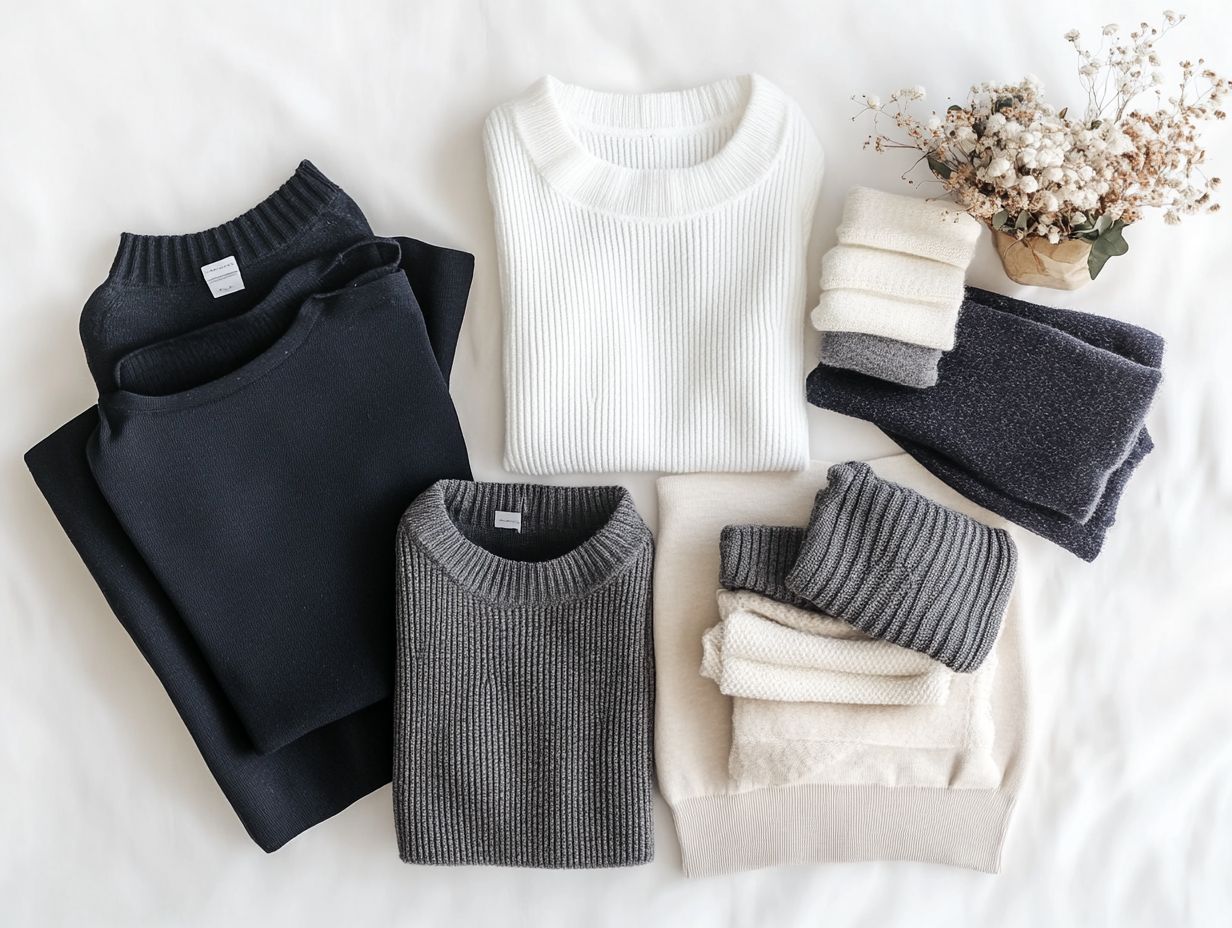
Utilizing complementary and contrasting colors effectively can truly elevate your outfit and leave a lasting impression.
When you pair colors thoughtfully, you achieve a striking visual impact that draws attention and enhances your personal style. For instance, if you have warm skin tones, consider combining a deep orange blouse with a rich blue skirt; these hues not only harmonize beautifully but also infuse warmth into your overall look.
On the flip side, if your complexion leans cooler, a vibrant emerald green dress paired with a soft lavender jacket creates a delightful contrast that accentuates your features.
By grasping these principles, you can create outfits that resonate with your unique coloring while allowing for playful experimentation with various palettes.
Creating a Capsule Wardrobe with Versatile Colors
Creating a capsule wardrobe with foundational colors transforms your closet into a streamlined haven, providing you with countless outfit possibilities while significantly reducing decision fatigue.
By concentrating on foundational colors and neutral tones, you can mix and match with ease, effortlessly crafting a variety of looks that cater to any occasion, whether it’s a casual outing or a formal event.
The secret lies in choosing colors that harmonize beautifully, ensuring every piece enhances the others for a cohesive and stylish ensemble.
Maximizing Outfit Options
Maximizing your outfit options within a versatile wardrobe hinges on making strategic selections of timeless colors and timeless pieces that can effortlessly transition from day to night.
By thoughtfully curating a blend of staple items think a classic white button-up, tailored trousers, and that little black dress you can seamlessly move from a casual look to an elegant evening event.
Layering is essential for adding depth and interest; consider incorporating a denim jacket or a tailored blazer to achieve a business casual look.
Don t underestimate the power of accessories; a statement necklace can transform a simple outfit, while a versatile scarf adds warmth and flair. And let s not forget shoes the right pair of ankle boots or stylish flats can serve as the perfect finishing touch, elevating your entire wardrobe.
Frequently Asked Questions
What are the Most Versatile Clothing Colors?
The most versatile clothing colors are black, white, navy blue, gray, beige, and olive green.
How can I incorporate versatile clothing colors into my wardrobe?
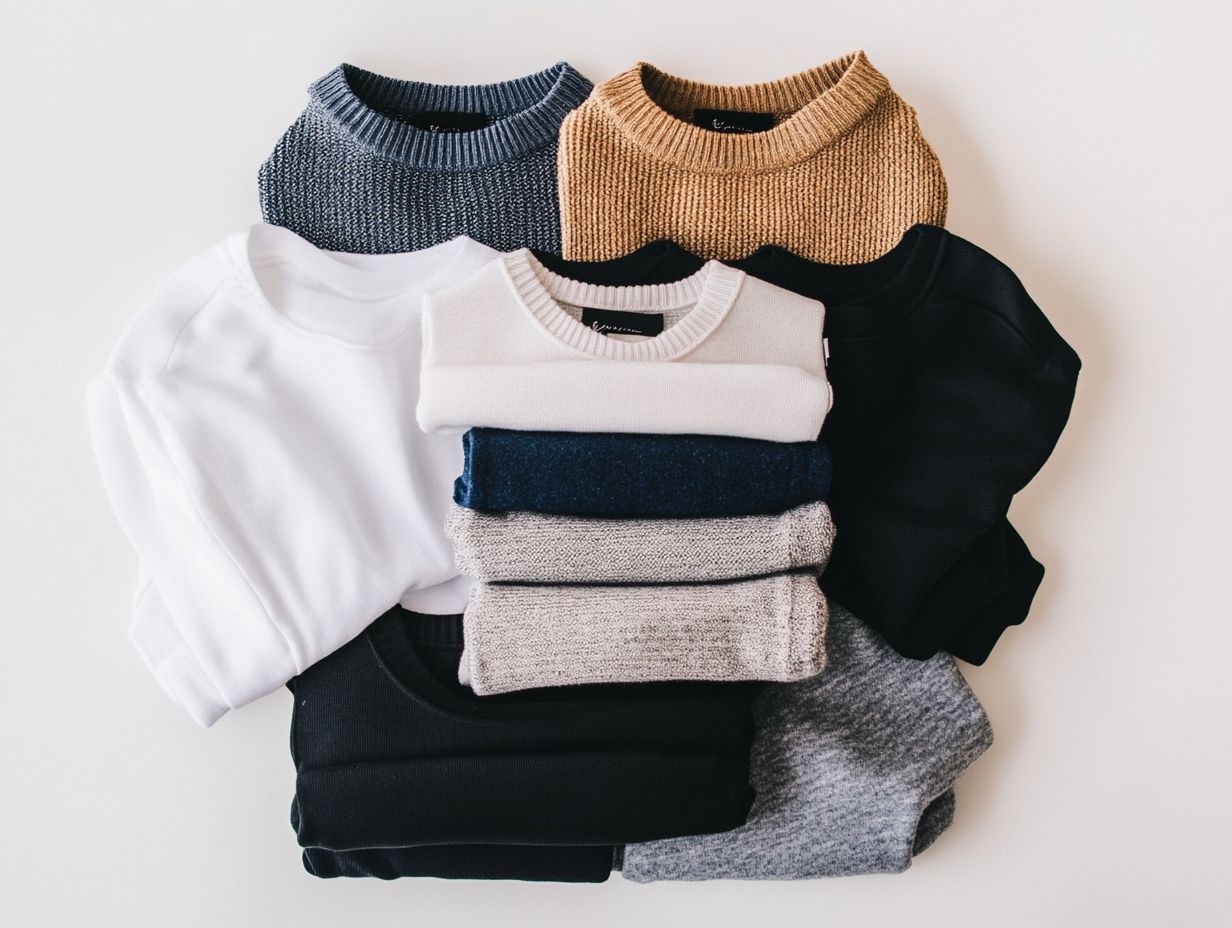
You can incorporate versatile clothing colors into your wardrobe by choosing items in these colors such as tops, bottoms, jackets, and accessories.
Do versatile clothing colors work for all seasons?
Yes, versatile clothing colors can be worn in all seasons. They can be easily layered or paired with other pieces to create different outfit combinations for different seasons.
Can I wear versatile clothing colors for both casual and formal occasions?
Yes, versatile clothing colors can be dressed up or down, making them suitable for both casual and wedding formal occasions.
Are there any other benefits to choosing versatile clothing colors?
Aside from their versatility, choosing clothing in these colors can also make it easier to mix and match them with other pieces in your wardrobe.
What are some examples of how I can style versatile clothing colors?
You can create a classic look by pairing black pants with a white top, or a more casual look by wearing a navy blue dress with a denim jacket. You can also add a pop of color by accessorizing with a colorful scarf or shoes.

